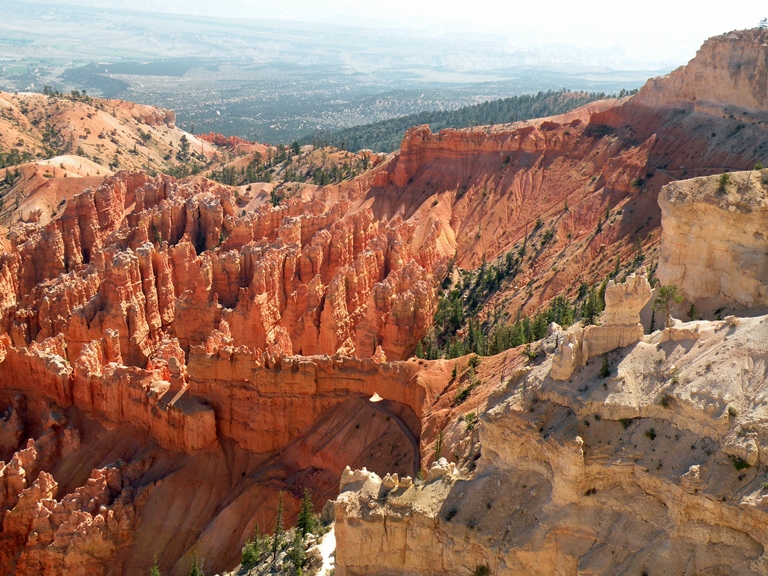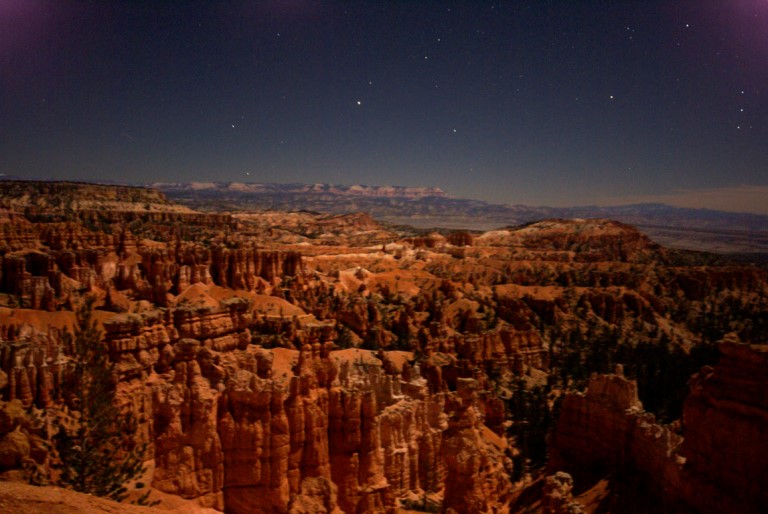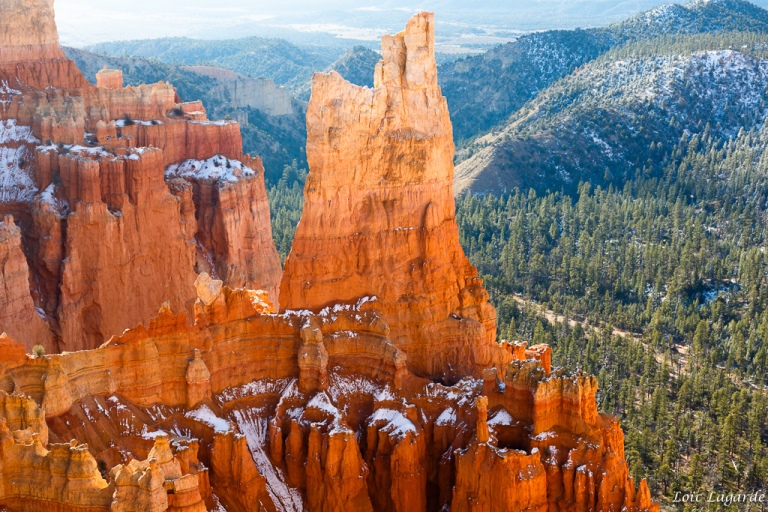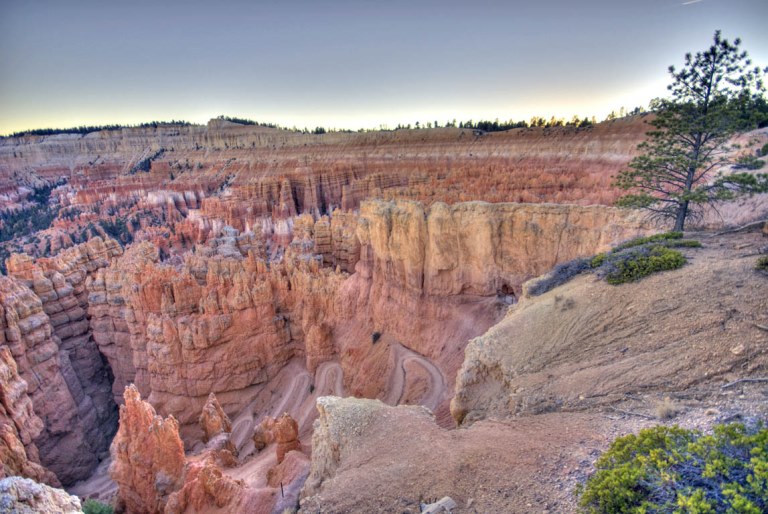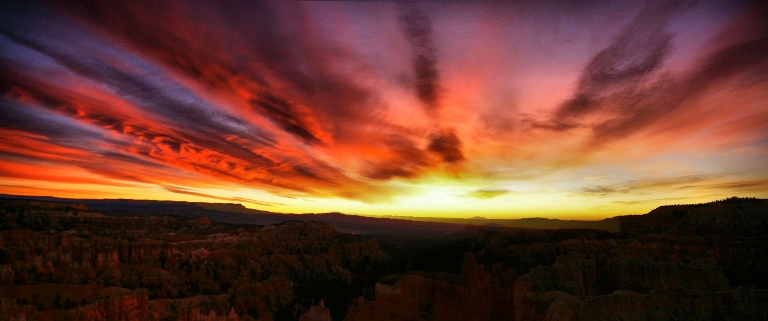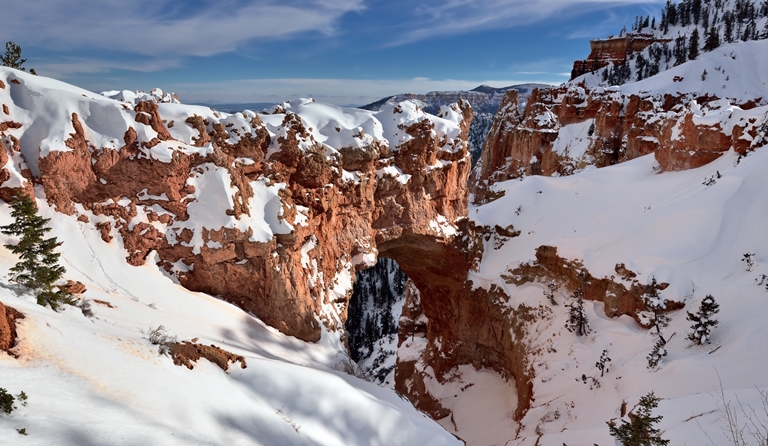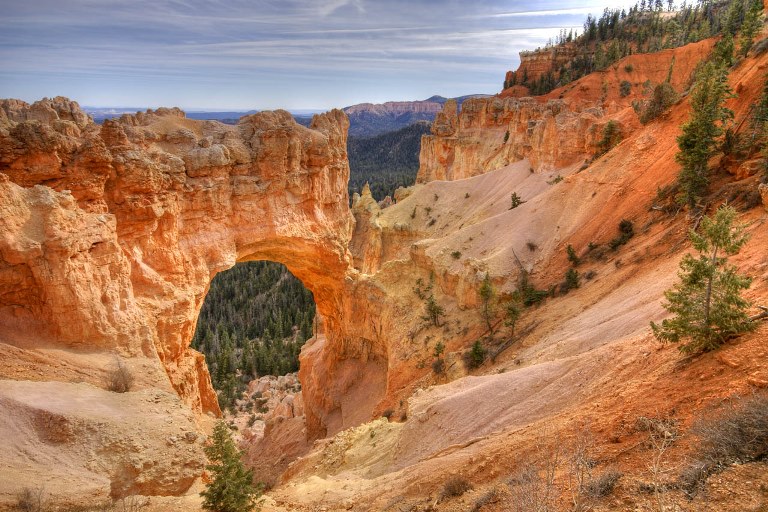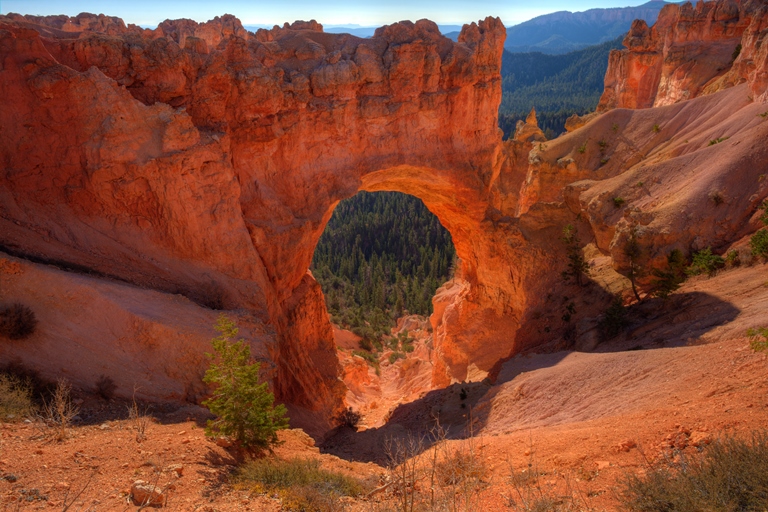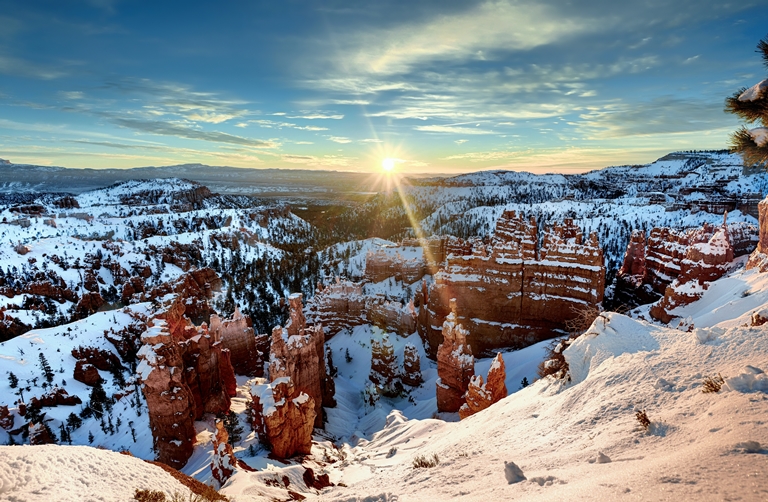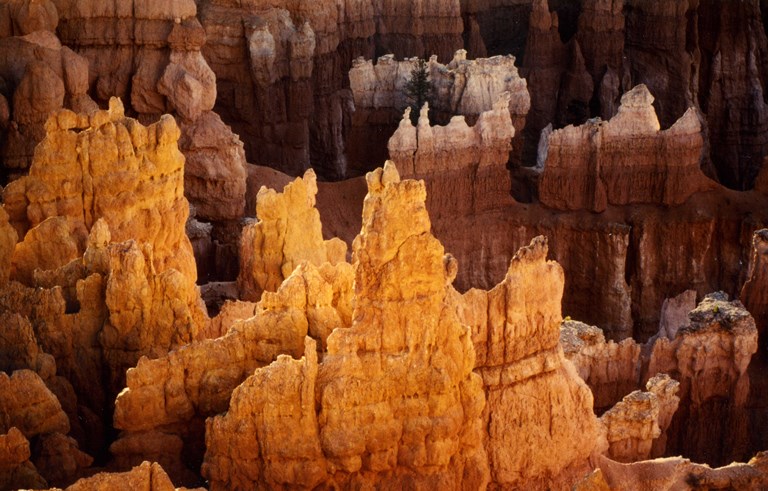Bryce Canyon
Key information: Bryce Canyon 
- Some of the world’s most extraordinary scenery: brightly hued sandstone carved by wind, water and ice into a series of deep and huge amphitheatres with an unimaginable profusion of spires, towers and other excrescences, all with gorgeous colour and texture contrasts.
- There is a huge variety of walking options here, mainly day walks.
Walkopedia rating
- Walkopedia rating94
- Beauty36
- Natural interest18
- Human interest4
- Charisma38
- Negative points2
- Total rating94
- Note: Neg: Heavy use on best-known trails in higher seasons.
Vital Statistics
- Length: Your choice
- Maximum Altitude: Around 2,000m
- Level of Difficulty: Variable
WALK SUMMARY
Utah’s Bryce Canyon boasts some of the world’s most extraordinary scenery: an extensive area of brightly hued sandstone carved by wind, water and ice into a series of deep and huge amphitheatres in which sit an unimaginable profusion of spires, towers and other excrescences called hoodoos, and arches and other formations.
It is reminiscent of Turkey’s Cappadocia; its scenery is arguably even more amazing.
The hoodoos can be 200ft (60m) high, and (unsurprisingly) have a fascinating and complicated geological history. They are capped by a layer of harder limestone and conglomerate rock which reduces their erosion, resulting in often sheer-sided towers the size of their caps.
Visually, the thrilling weirdness of the scenery is enhanced by gorgeous colour and texture contrasts: the greens of the prevalent ponderosa pines and spruce, and the often-blue sky, compliment the rocks’ oranges-to-pinks beautifully. The forests (and, somehow surprisingly, rough meadows) in the canyon shelter a surprisingly diverse fauna, including bears and mountain lions.
Being actually quite high (the rim is at around 2,500-2,700m), the winters are hard here, indeed snowy, usually from mid November to late March. The summers remain relatively temperate, with thunderstorms in July and August.
A joy of Bryce is that, other than a single road at one side, its interior can only be enjoyed on foot, although the best-known trails can get busy in high season. The access road to the heart of the area is behind the rim.
There is a huge variety of walking options here. The north and central areas of the National Park contain most spectacular scenery.
Multi day:
- The Under the Rim Trail. 23 miles (but perhaps not as rich in splendors as some others). Winds under the rim of the western part of the canyon, away from the heart of the area. Beware lack of water. You can camp down here.
- Riggs Spring Loop: short (8 miles), but you are allowed to camp and it is full of fascination. In the less-extraordinary (but still extraordinary!) southern part of the park.
Longer day walks: these mostly require joining together some shorter walks, for instance the Fairyland Loop with the Queen's Garden Trail and connector, The Navajo Loop, and Rim Trail (which Walkopedia did); or the Peekaboo Trail with combinations of the Navajo Loop, Queen's Garden Trail and Rim Trail.
Shorter day walks:
- Peekaboo Trail: Terrible name, but probably the best known walk in the area. A 6ish mile (from Bryce Point) rub-your-eyes overload of weirdness, really outstanding formations and atmosphere. It does involve quite a lot of ascent/descent. Can be combined with the Rim Trail and other key walks.
- Fairyland Loop: an absolute classic, an 8 mile loop between Fairyland and Sunrise Points on the rim (descending into Fairyland Canyon, then Campbell Canyon, climbing back to the rim) then returning on the Rim Trail to Fairyland Point. Wind through extraordinary formations, in what will feel like a psychedelic – nay psychotropic – experience.
- Navajo Loop: Superb shorter (1.5mile) walk from Sunset Point, taking in the amazing, steep, narrow Wall Street Canyon. Walk it with Queen's Garden.
- Queen’s Garden Trail: 1 mile of concentrated beauty and fascination down into the canyon, linked by the Queen’s Garden Connector to the Navajo Loop and Peekaboo Trails.
- Rim Trail: an easy 6+ miles of visual superlatives on the … er…rim of the canyon. Links other trails to help you create wonderful longer walks.
There are plenty of other walks to be done, so you could spend several rewarding days exploring different parts of the maze.
Walkopedia walked the Faiyland Loop from Fairyland Point back to the rim, then down the Queen’s Garden Trail and connector and the amazing Wall Street ascent of the Navajo Loop back to the rim; and the Rim Trail back to the start, to make a circuit. 11+ miles; 6 hrs including lengthy view-admirations and endless photo taking.
Often combined with Zion NP and the Grand Canyon. Walkopedia walked here as part of a Zion, Bryce, Goblin, Capitol Reef, Arches NP, Canyonlands, Monument Valley, Grand Canyon loop.
Water is in very short supply. Bring plenty when walking within the canyon.
You can lodge and camp within and near the park.
Best book: Cicerone’s The Grand Canyon with Zion and Bryce Canyon National Parks. Excellent in many ways, if perhaps a bit short on the feel of the place. Find relevant books on Amazon.
Have a look at the dreaded TripAdvisor. You should get good, current views on this area.
Our friends and partners Responsible Travel have a selection of walking and other holidays in South-west USA. You should get good ideas, perhaps for something you hadn’t thought of!
We want to give even more information: Please help us by recommending your best walks/making suggestions and sending photos! Thank you!
Other accounts: share your experiences
Your comments on this walk, your experiences and suggestions, and your photos are very welcome. Where appropriate, you will be credited for your contribution.
We have a lot of helpful practical information and tips about this walk, covering everything from the best books and maps, to timing and weather, geting there, possible problems, whether you need a guide and where to find them, and useful websites. This section is only open to members.
Membership is FREE AND JOINING TAKES 30 SECONDS. To login or sign up click here
Safety and problems: All walks have inherent risks and potential problems, and many of the walks featured on this website involve significant risks, dangers and problems. Problems of any sort can arise on any walk. This website does not purport to identify any (or all) actual or potential risks, dangers and problems that may relate to any particular walk.
Any person who is considering undertaking this walk should do careful research and make their own assessment of the risks, dangers and possible problems involved. They should also go to “Important information” for further important information.
Anyone planning an expedition to this place should see further important information about this walk.
Safety and problems: All walks have inherent risks and potential problems, and many of the walks featured on this website involve significant risks, dangers and problems. Problems of any sort can arise on any walk. This website does not purport to identify any (or all) actual or potential risks, dangers and problems that may relate to any particular walk.
Any person who is considering undertaking this walk should do careful research and make their own assessment of the risks, dangers and possible problems involved. They should also go to “Important information” for further important information.
OTHER ACCOUNTS
share your experiences
Add your experiences, suggestions and photos. We would be delighted to receive your writing and ideas (which will be attributed appropriately where published).
Anyone planning an expedition to this place should see further important information about this walk.
Responsible travel matters, a lot. How you travel will make a real difference - for better or worse. PLEASE consider this when making plans. Read more



